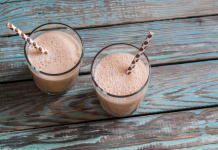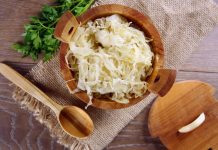
Just like we change our clothing for the season, we need to change our food too. Traditional healing systems such as Ayurveda and Traditional Chinese Medicine have recognized temperatures as one of the major influences on our health. External temperatures are not seen as only having a temporary effect but in some cases actually trapping heat or cold in the body affecting energy, weight, immune function, and mood.
Eating right for the season will not only help improve your health and help you physically and mentally adapt better to the current season, it will also help you to eat more local and seasonal foods – the way nature intended us to eat!
Read more about why eating seasonal foods is better for you and the planet
Hot Weather
We need more hydration in the heat and should eat “expansive foods”, which have a cooling effect on the body.
Limit:
- Large proportions of food
- Fats (butter, too much oil of any sort)
- Excessive protein
- Hot, hearty cooked foods
- Root vegetables in large amounts
Eat:
- Plenty of raw vegetables and leafy green vegetables (salads)
- Fruit and fresh fruit juices/smoothies
- Low fat animal protein (white fish, chicken, turkey)
- Organic yogurt and kefir, cottage cheese and goat's cheese
- Sprouts, beans
- Ground flax, chia seeds
- Whole grains like millet, quinoa, wheat berries
- Cooling herbs and spices: coriander, turmeric, dill, parsley, curry*, hot peppers*
*Some foods like curry may taste hot, but are actually
cooling. These foods initially feel hot because they expand the
capillaries allowing blood to rush to the surface of the skin. However,
this promotes sweating – and when sweat evaporates, the effect on the
body is cooling.
Best Cooking Techniques:
- Steaming
- stir-frying
- pickling
- raw
Cold Weather
Eating “contractive foods”, which have a warming effect on the body, help to maintain balance and keep our digestion and metabolism functioning optimally.
Limit:
- Raw fruit and juices
- Salads
- Cold foods (ice water, ice cream)
- Sugar and sweets
- Coffee
Eat:
- Root vegetables, winter squashes
- Stews, casseroles, bean soups
- Steel cut oatmeal/brown rice porridge
- Free-range eggs
- Whole grains like kasha, barley, brown rice
- Cooked/stewed fruits
- Fermented foods (sauerkraut, miso, tempeh)
- Small amounts of aged cheese
- Moderate amounts of fat from nuts and seeds
- Moderate amounts of fatty fish (salmon, tuna)
- Small amounts of beef, organ meats
- Warming herbs and spices: garlic, ginger, cumin, black pepper, cinnamon, cloves, basil
Read more about cooking with herbs and spices
Best Cooking Techniques:
- Boiling
- sautéing
- baking
- dry roasting
Image: David Schiersner
Sources:
Murray, Michael. N.D., Encyclopedia of Healing Foods , Atria Books: New York, 2005.
Colbin, Annemarie. Food and Healing, Ballantine Books: New York, 1986










